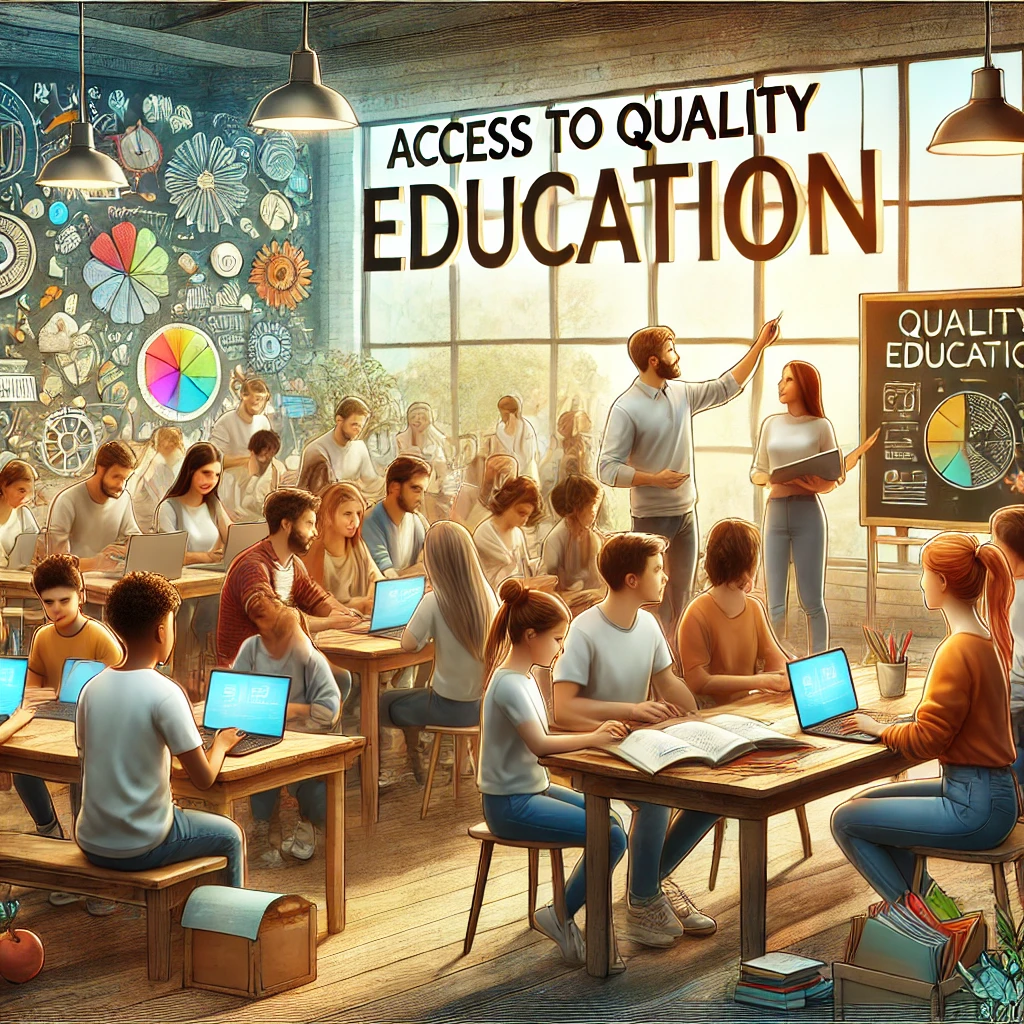Essay on Quality Education
Introduction
Education is a powerful tool that shapes the future of individuals and societies. Quality education goes beyond the simple delivery of information; it nurtures critical thinking, creativity, and personal growth. It aims to empower individuals to become active, responsible members of society who can make informed decisions, solve problems, and contribute meaningfully. This essay explores the essential elements of quality education, its impact on individuals and communities, and the challenges faced in achieving it globally.
Defining Quality Education
Quality education encompasses more than just access to schools and classrooms; it involves delivering relevant, inclusive, and impactful learning experiences that prepare students for real-world challenges. Quality education is characterized by a well-rounded curriculum that promotes intellectual, emotional, social, and physical development. It emphasizes critical thinking, analytical skills, and creative expression, allowing students to approach problems from various perspectives. A quality education system also fosters values such as empathy, tolerance, and responsibility, equipping learners to navigate a diverse and interconnected world.
Components of Quality Education
Several critical components contribute to quality education. First, qualified and dedicated teachers are essential. Educators who are well-trained, motivated, and equipped with modern teaching techniques can make a significant difference in the classroom. They inspire and engage students, making learning enjoyable and effective. Additionally, curriculum content must be relevant and up-to-date, addressing the skills and knowledge needed in a rapidly changing world. This includes a strong foundation in literacy and numeracy, as well as competencies in science, technology, and global awareness.
Another key component is access to resources, including textbooks, technology, and a safe learning environment. In many parts of the world, inadequate facilities, lack of basic supplies, and overcrowded classrooms hinder learning. Equally important is inclusivity; quality education should be accessible to all, regardless of gender, socioeconomic status, ethnicity, or disability. An inclusive education system ensures that every learner has the opportunity to thrive.
The Impact of Quality Education
Quality education positively impacts individuals, families, and communities. For individuals, it opens doors to better employment opportunities, improved health outcomes, and a higher quality of life. Education helps individuals understand and assert their rights, participate in civic activities, and make informed decisions. On a broader scale, communities benefit from educated populations through increased economic productivity, reduced poverty rates, and enhanced social cohesion. An educated society is more resilient to challenges and better equipped to innovate and adapt to change.
In addition to economic benefits, quality education fosters social values that strengthen communities. Through exposure to different cultures, ideas, and perspectives, education promotes tolerance and reduces prejudice. By teaching ethical and environmental responsibility, education encourages individuals to make choices that contribute to sustainable development.
Challenges to Achieving Quality Education
Despite its importance, quality education remains elusive for millions of children worldwide. Economic disparities, political instability, and cultural barriers contribute to inequality in educational access. In low-income regions, schools often lack adequate funding, resulting in poor infrastructure, insufficient teaching materials, and unqualified teachers. Rural and remote areas are especially vulnerable, as they are often overlooked in favor of urban centers.
Gender inequality also hinders educational opportunities in many societies. Girls are often at a disadvantage, particularly in regions where traditional roles discourage female education. Additionally, conflict and crisis situations, such as wars and natural disasters, disrupt schooling for millions of children, leaving them without the stability and security that education can provide.
Solutions and the Role of Global Initiatives
To overcome these challenges, governments, NGOs, and international organizations must collaborate to prioritize education reform. Policies focused on equal access, investment in teacher training, and improved infrastructure can make a lasting impact. Initiatives like the United Nations Sustainable Development Goal 4 (SDG 4) aim to "ensure inclusive and equitable quality education for all." By increasing funding for education, especially in underserved areas, and promoting initiatives that address gender inequality, SDG 4 provides a framework for collective action.
Technological advancements also offer promising solutions. Digital learning platforms and remote learning tools can bridge gaps in education, reaching children in rural and conflict-affected regions. Partnerships between governments and tech companies can help provide affordable internet access and devices, ensuring that digital resources are available to all learners.
Conclusion
Quality education is a fundamental right that lays the foundation for personal, social, and economic progress. Its benefits extend beyond the individual to shape healthier, more prosperous, and more cohesive communities. While significant challenges remain, global initiatives and technological innovations provide hope for a future where every child has access to quality education. Ensuring this access is essential to creating a world where individuals can thrive and contribute positively to society, ultimately fostering sustainable development and a more equitable world.

